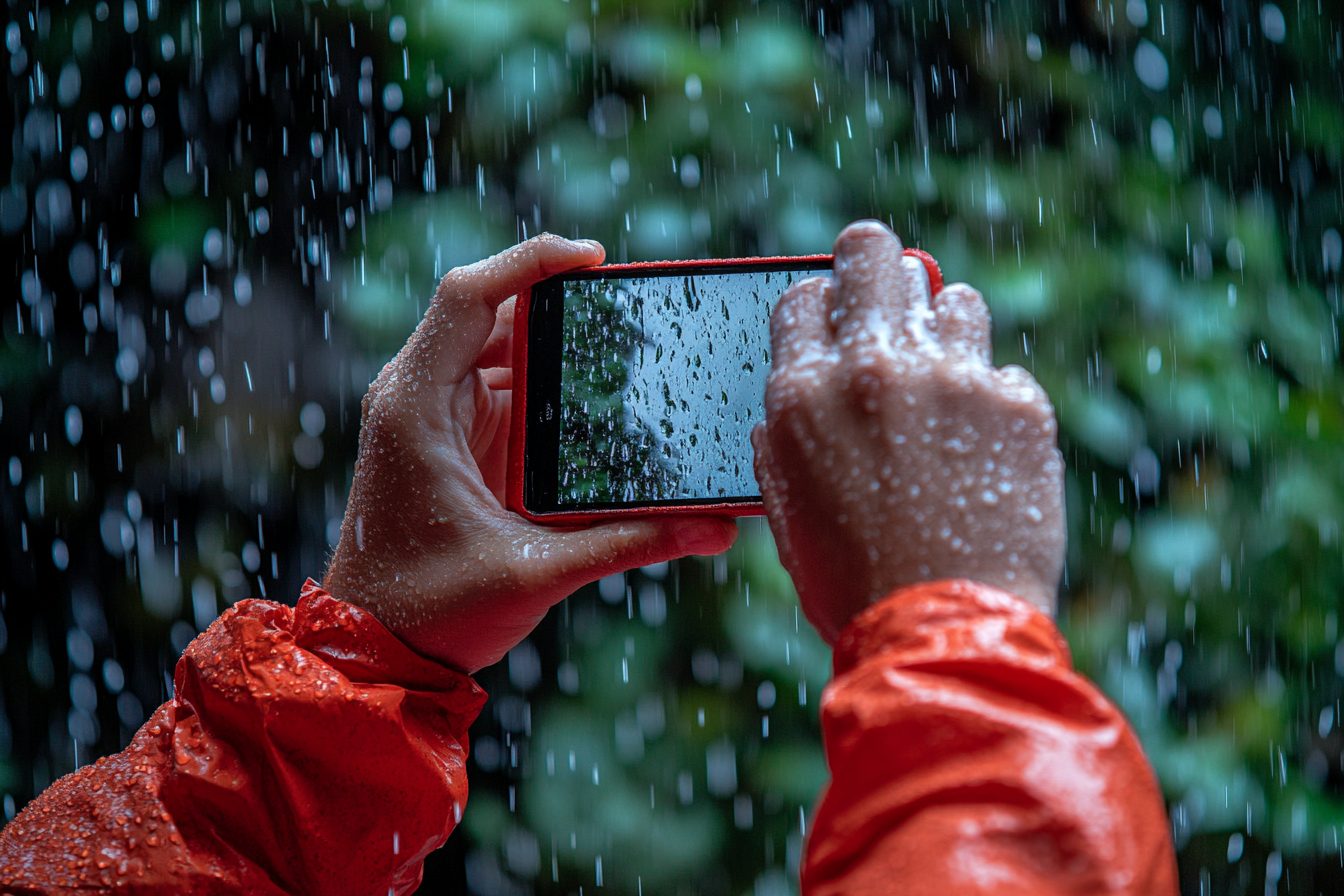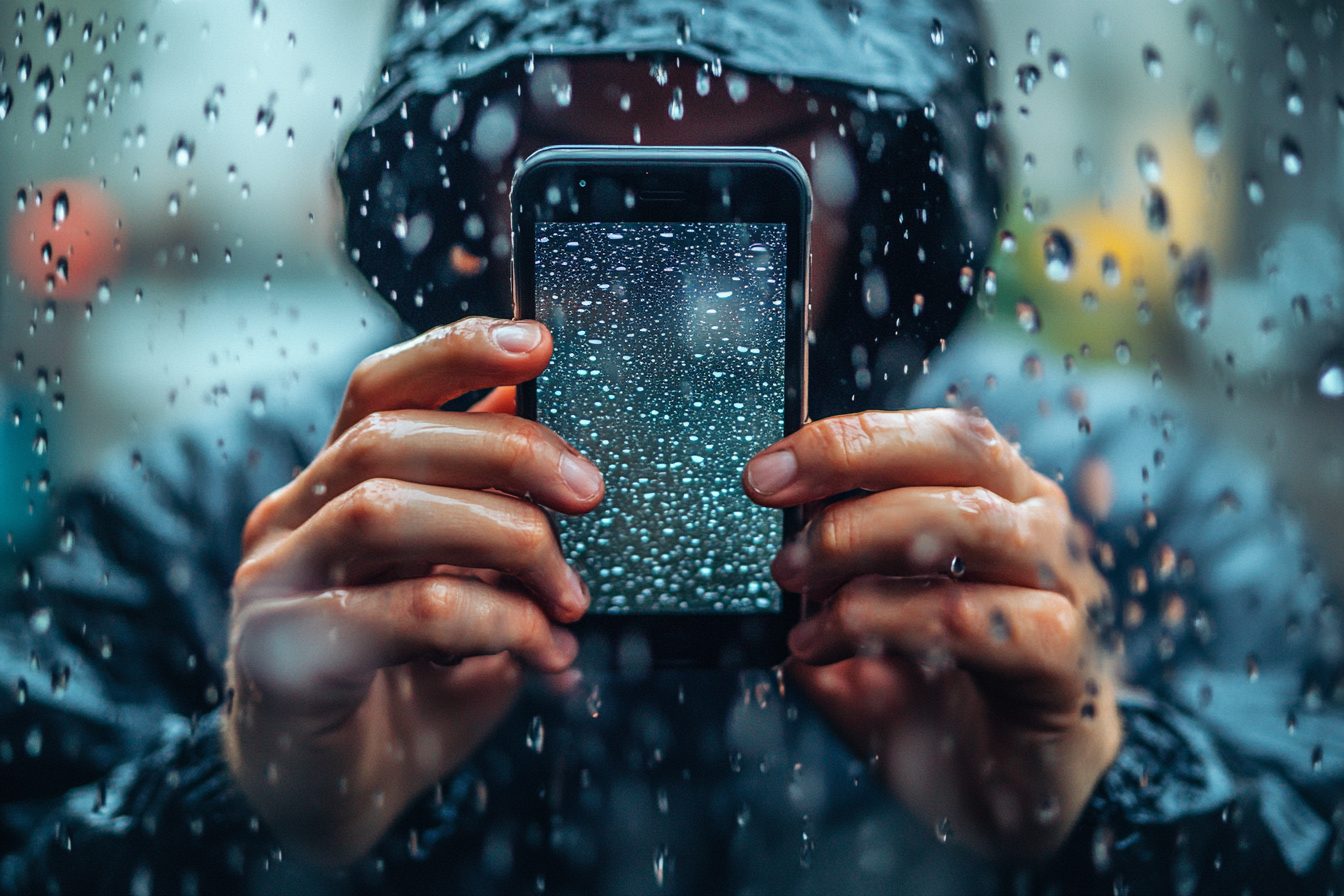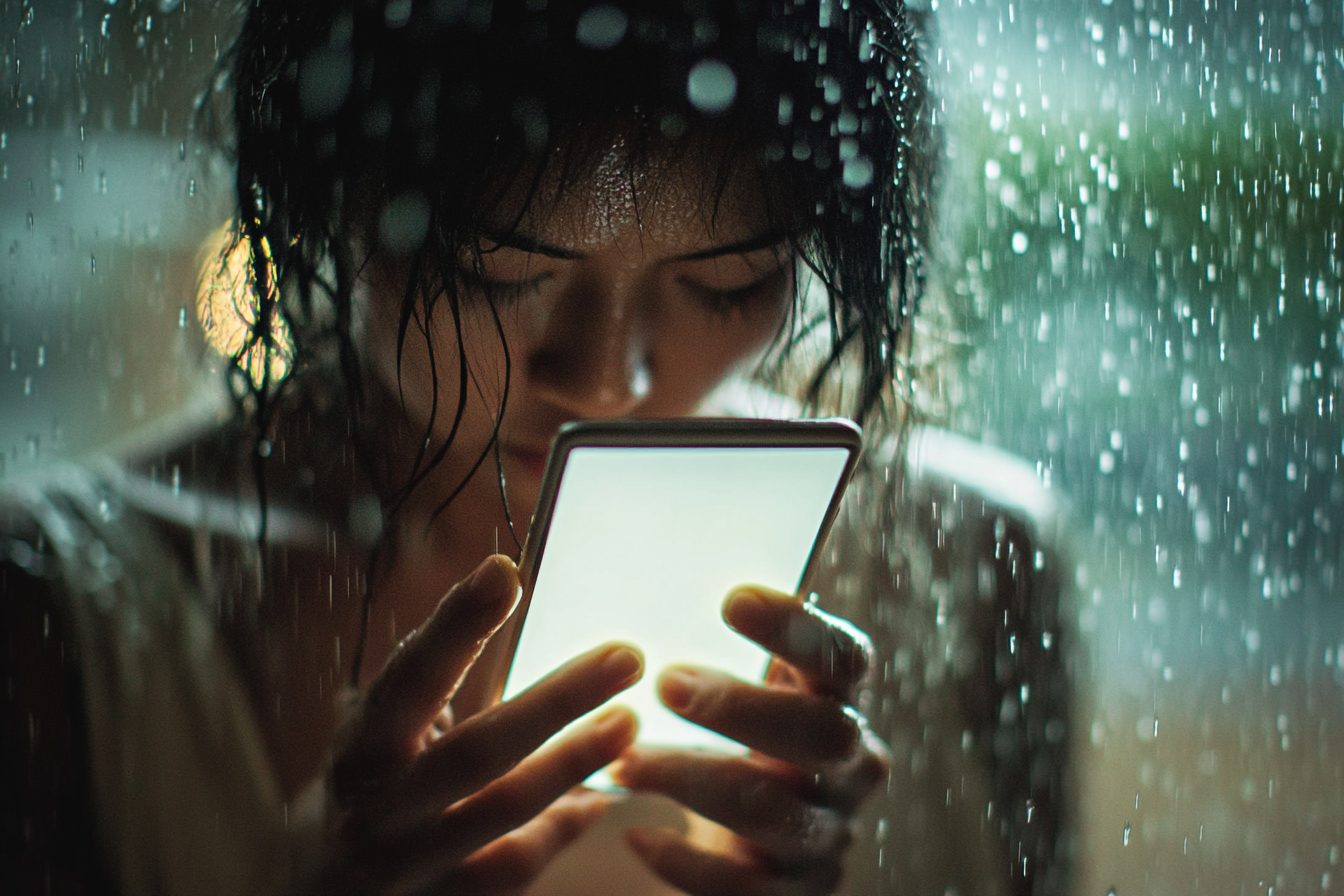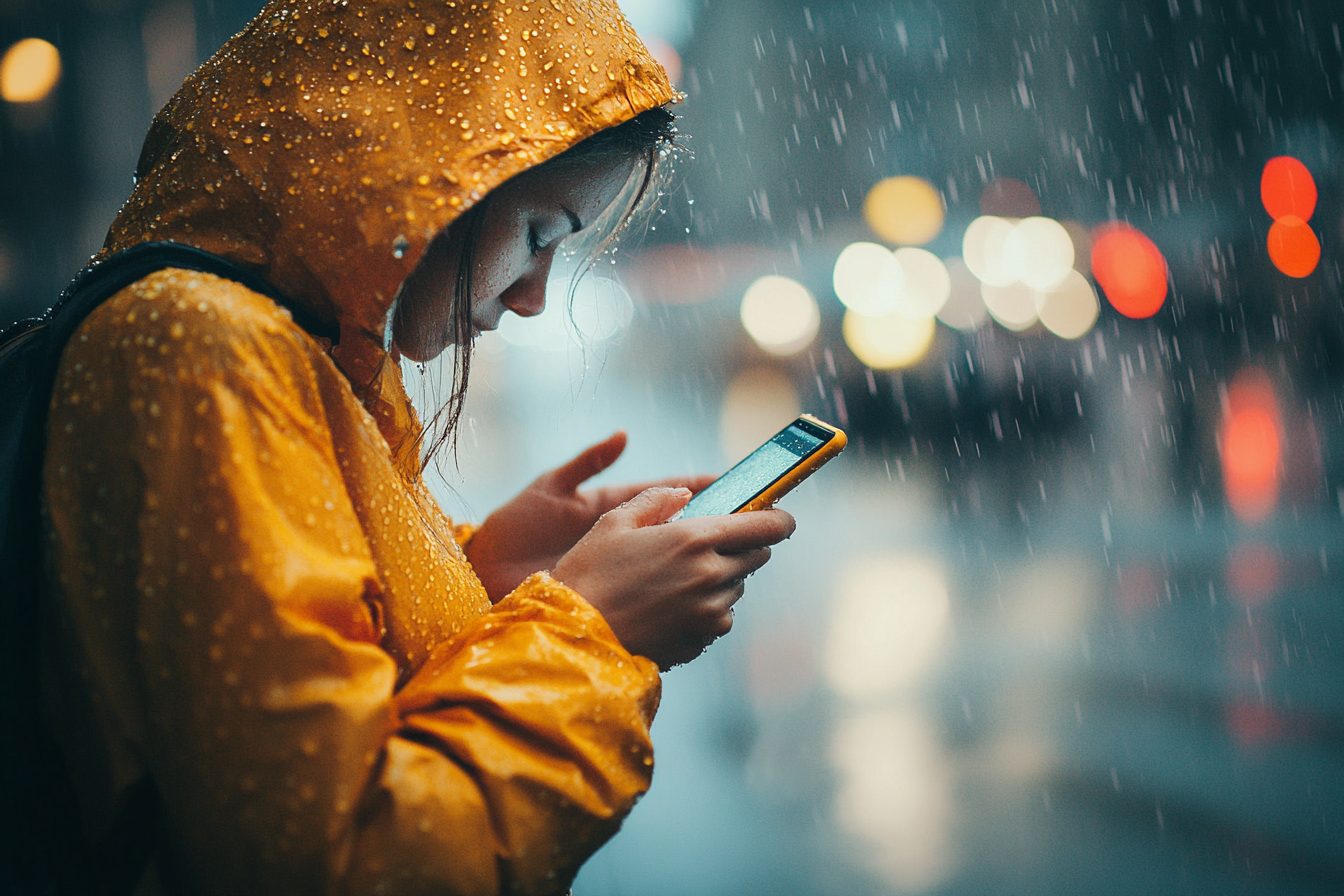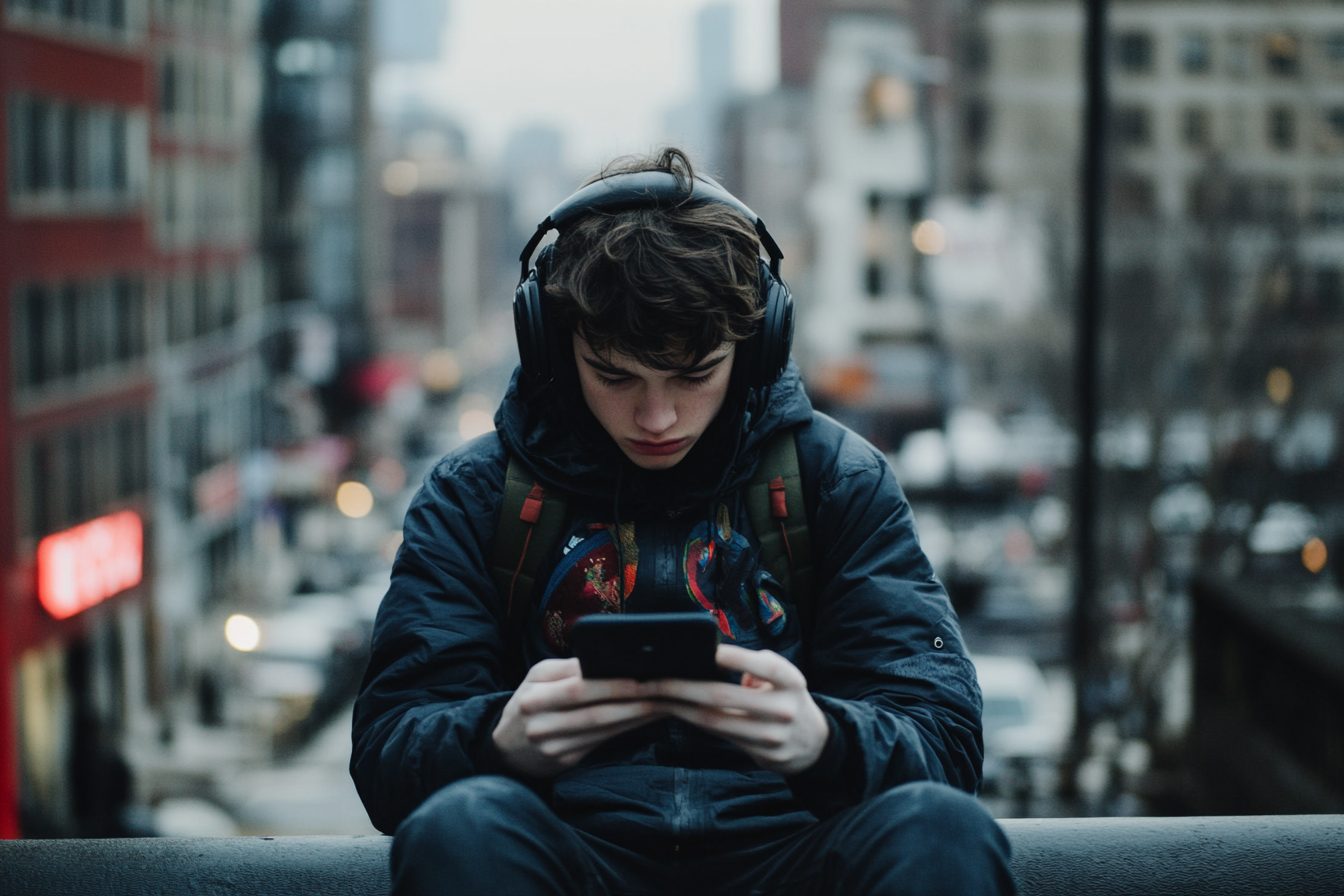Yesterday I saw a man completely sacrifice his body for a phone. When standing outside my favorite coffee shop, it began to rain—which wasn’t exactly a downpour but had huge rain drops that fell randomly. I watched as a stranger turned into a human umbrella from a scene I have seen repeat a number of times.
A man standing next to me counter adapted his body in the most phenomenal way. He curled his upper body forward while simultaneously putting his arms underneath to shield his phone, the result was a sick human umbrella made out of torso. His arms came emerged dry from under the umbrella along with the phone that sat upon it, but the man’s back was drenched the whole time.
It’s not like I haven’t seen this before. In fact, what I found most unique was how protective and instinctual this dance really was at the very core. There was a moment when I laughed, but end up realising I did the exact same thing myself.
This is precisely why I took the liberty to call it the advanced technique, a phone shield created with one hand while using the other as a roof, this style allows me to shield the phone while scrolling without a care in the world. They probably see us as strange creatures, these humanoids who bend over in the oddest way whenever the sky pours water, not to protect their bodies but to cover the glowing small rectangles held in their hands. The absurdity struck me fully last month during a Seattle business trip.
After spending far too many days in perpetually warm California, I had grown accustomed to forgetting the simplest of things – like umbrellas. Imagine my surprise when I found myself in what the locals are kind enough to call a mild-mist drizzle and I, for some odd reason, treated it as a more than moderate downpour. I, a self-proclaimed adult person, was masking the fact that my risky clothing choice of the day was soaked.
It was a passers by – who clearly donning the proper get up for the weather – poked her head just enough under her shiny blue umbrella, threw her hand in the air as if calling for a silent truce, and declared, “Yes, prioritizing yourself is a thing.”
I sure do love knowing that setting aside my phone and taking it out of my pockets like a baby kangaroo makes me, “undeniably right.”
The part that blows my mind the most about the so-called screen crouch is not so much about how we do it, but the fact that it is so common everywhere. It’s a fact that I’ve mentioned before communities that have adopted the screen crouch can be found all over the world —whether it’s Tokyo, London, New York or even Mumbai. It’s all so wonderful that there exists a social behavior that is independent of a language, culture or even borders.
It seems that the world has, without much of a conversation or consensus, established the same instinctive actions in relation to the issue of water coming into contact with a screen and that is shielding the screen. Of course, the irony is that now many high-end smartphones boast water resistance features that would put the raincoats hanging in our closets to shame. My current device supposedly can take a complete immersion of up to 1.5 meters for 30 minutes.
However, when it pours, I find myself doing these crazy things to keep it dry from water as if it were made from sugar cubes and old parchment. I fondly say that my screen-protection neurosis became apparent to me when I lost my brand-new iphone 3G into the toilet of a pub after a few too many celebratory drinks after a product launch. The memory of retrieving the device and watching the screen glitch is one that has left emotional scars that no amount of waterproofing can erase.
Some traumas run too deep. We can chalk up this behavior simply to the need to protect expensive technology, but I think there is something deeper going on. It is no longer in the poetic or metaphorical sense.
It has evolved to a biological dimension. Neuroscience suggests that we incorporate our phones into our cognitive self-image. Just like a craftsman starts feeling his tools as extensions of hands, our phones have now become parts of us.
You can witness this in other behaviors meant to protect the phone. Pay attention to the overblown reaction of a person who is dropping his phone – the full body cringe, the gasp, the cries of horror from deep within his stomach. It closely resembles how people react when they trip and fall.
In a very real sense, all of us undergo this reality: the phone has become part of us. Last spring, I saw something particularly shocking at my daughter’s recital. A dad sitting on the other side of the aisle was filming his kid’s performance when his phone dropped.
It was like he was diving for a soccer save! He dove to the side as if trying to catch a ball. My man powered through the consequences.
He dove straight through some parents and practically bulldozed a chair. For a brief second, the kindergarteners had to stop singing “This Land Is Your Land” but at least the phone wasn’t broken. On the contrary, that guy had to deal with a shattered sense of honor and he was limping out of the place.
He returned to his seat looking both victorious and embarrassed, which made his face unpleasantly flushed. We locked eyes and I knew what this man was feeling. Not having to explain anything, I gave him a thumbs up.
It was an all-knowing thumbs up. If we had switched spots, I would have done the exact same thing. The screen crouch and its protective gestures absolutely intrigue me, as they point to a more profound aspect of our psychological connection with technology.
I spent several years in design meetings, where we talked about “emotional bonds” in the context of users and devices. Every single psychological manipulation imaginable was used to elicit bond formation—there were personalization features, tailored notifications, and perfectly calibrated haptic feedback. Observing people use their bodies as an umbrella for their phones was much more illuminating than anything we set out to design.
My most outlandish personal example comes from two summers ago, when I went to a water park with my kids. I was fully clothed while standing near the edge of the splash zone, taking pictures of my son and daughter when out of nowhere a bucket tipped over and soaked me. I instinctively raised my arm with the phone and positioned it high above my head, which, to be honest, was such an automatic, primitive action that it would be safe to assume it was part of my DNA.
At this point, my free arm was used to shield my face, so I ended up with a dripping wet body, a partially protected face, and a completely dry phone. Nearby, a teen began slow clapping, saying, “Nice save,” in that witty-yet-sincere way only teenaged boys seem to master. This treatment if phones is truly fascinating, especially when compared to how an individual would treat other important items like jewelry.
To this day, I have not witnessed anyone shielding their $20 Casio watch or $10,000 Rolex from the rain with their bodies. Even more so, I do not hunch over my wallet during a downpour, despite it having my last photos of friends and family. In comparison, my phone gets full protecter treatment.
Maybe this stems from the untouched combination of fragility, expensiveness, and girth that a phone possesses. At some point, every one of us has experienced the silent panic of a device freezing and losing contact with the digital universe. What is even more concerning is not the expense of a new device, but the lacking ability to connect with the world around us.
Not too long ago, I did a non-scientific poll of my friends and family regarding their main priorities when it comes to rain protection. If they wanted to protect their hair, shoes, phone, or clothes from a downpour, which would they choose? Almost all of my friends were in agreement that the phone was the most important, one going as far as saying, ‘Hair dries, clothes dry, shoes dry, but a phone dies,’ and needless to say, it was rather amusing to hear them say that.
Even though the reason is contemporary in nature, there is some logic in that. When looming over a screen, it shows how we as a society view value, what a status symbol is. Alongside the values we adopt, there are different other things we can focus on.
Nowadays, people raise their phones instead of newspapers because they would rather stay glued to the digital world instead of stay physically comfortable. What more powerful conclusion can we make about the twenty first century? Having to tuck away my phone when experiencing rain is the reason I attempt to stray away from this behavior.
I have found that the most effective way to fight this urge is to actually just face it head on and have a ‘maskless’ walk while being out in the rain. It feels wrong, transgressive even, like walking outside in underwear. Any logical reasoning around potential damage that could be done by the rain seems to get blitzed by the added physical discomfort I experience having to watch raindrops hit the screen.
Like millions of others, I keep on doing the robotic dance wondering my shape, my body, and gently putting my phone away from exposure to the climate. Yes! Another robotic move successfully preformed.
From above we resemble a mundane dance which subtly showcases the struggles of modern day society. One way or another it is sweet to experience this collective self consciousness. During your next run-in with an unexpected rainfall while some crouching over your cellphone, take notice around you.
There is something deeply reassuring across out cultural divides, what makes this modern dance so unusual is that we all seem to be deeply connected. Unsurprisingly, everyas we trade our physique ease for digital placation, this triggers another drop.
